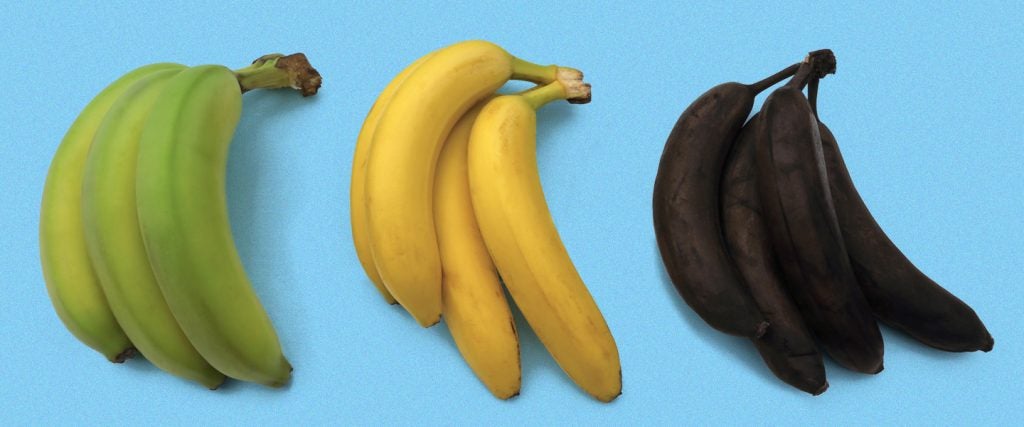When you’re selecting bananas in a supermarket, local grocery store or even at a gas station (yes, I’ve purchased a gas-station banana before), you’re making several assumptions about those bananas based on their on-the-spot appearance — which is hopefully conspicuous by the lack of spots they exhibit — and when you intend to consume them.
If the bananas you’re assessing are already perfect, this means they’re going to verge on over-ripeness the very next day. If you intend to slice all of them up and toss them into banana pudding, a banana cream pie, banana pancakes or any other recipe necessitating the inclusion of bananas, these concerns don’t matter. However, if you intend to throw a daily banana into your recyclable neoprene lunch sack, your wisest course of action is to purchase a bushel that’s still somewhat green.
But even this latter option poses a challenge — in the course of a week, your lunchtime banana is likely to go from unripe, to perfectly ripe, to spotted, brown and mushy. I guess what I’m trying to say is, it’s difficult to finely-tune everything with respect to the timing of banana consumption.
Has it always been this way?
Well, until humans began to farm and cultivate bananas on their own, they could identify the bananas that were ostensibly ripe, snatch them straight from the tree and consume them on the spot. It’s the delayed gratification that accompanied the harvesting and shipping of bananas for later enjoyment that came with special challenges — especially in the early stages of banana shipping.
While informing readers about the tripling of American banana consumption between 1890 and 1910 (from 5 million bushels to 15 million bushels) — and while also supplying a statement about how bananas were now the best food product, period, alongside wheat — The Salt Lake Telegram spoke about how the temperature of the shipping containers holding the bananas needed to be closely monitored and regulated in order for shipped bananas to arrive in a state still suitable for sale.
“The right temperature is given at 48 degrees,” the article stated. “If warmer than that, the bananas ripen too fast and get to market in bad form. When they reach the northern states, the bananas are put in warming houses before they are shipped inland.”
During this period, retailers and customers had even less control than now over the condition the bananas arrived in, and could do effectively nothing to regulate the temperatures of the stores and homes they were placed in. A notice placed in The Merchants Journal during that era instructed retailers on what sort of bananas should be shipped relative to the weather conditions. “The weather is getting warm and in these damp conditions bananas ripen very fast,” read the notice. “We advise shipping mostly green stock, or by express.”
By 1918, at least one banana merchant believed he had a handle on things. He explained his banana-ripening method to the San Francisco Chronicle, and it involved dipping bananas in warm water so that they would ripen in a more even fashion in comparison to ripening by air.
Does that method work?
I haven’t seen evidence of too many people advising folks to use this method nowadays, and it sounds suspiciously close to the instructions for making banana tea.
The most tried-and-true banana-ripening methods all seem to involve controlling the proximity of bananas to one another, or to other fruit. Bananas that remain bunched ripen more quickly than bananas that have been separated. This is a result of ethylene (or ethene) gas that’s released by bananas as they ripen, and the accumulation of ethylene in the air causes them to ripen at an accelerated rate.
The same thing happens for the exact same reason when bananas are stored with other ripe or ripening fruit, which is why your lunchtime banana will yellow significantly if it’s placed in your paper bag alongside something like an apple.
So if you want to expedite the ripening of your bananas to increase their sweetness, keep them in a bunch. If the week progresses and you need to slow down the ripening process so that your bananas remain at an ideal level of golden sweetness, you’ve got to pull an Offspring and keep ‘em separated.
I’ll show myself out.

